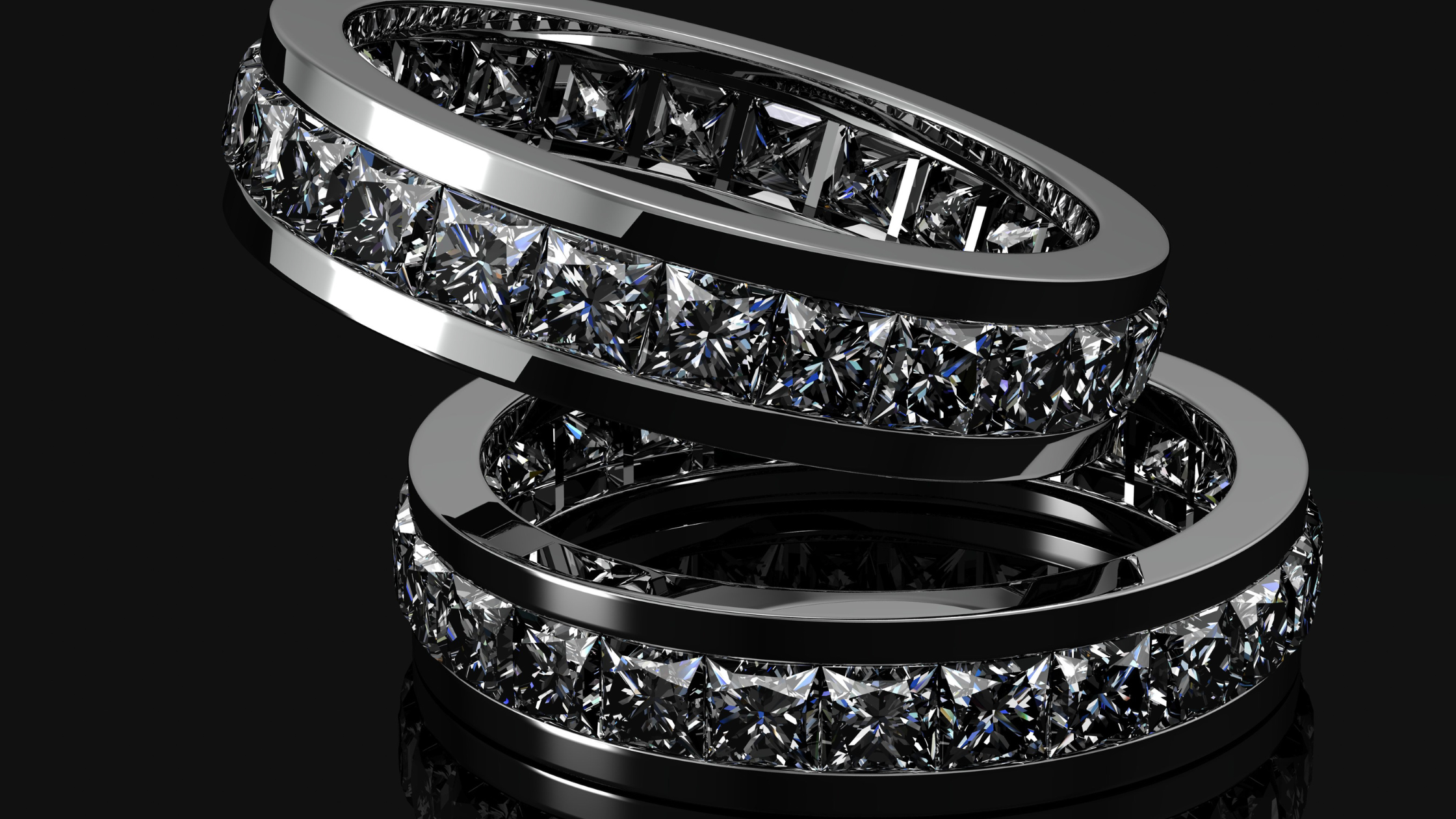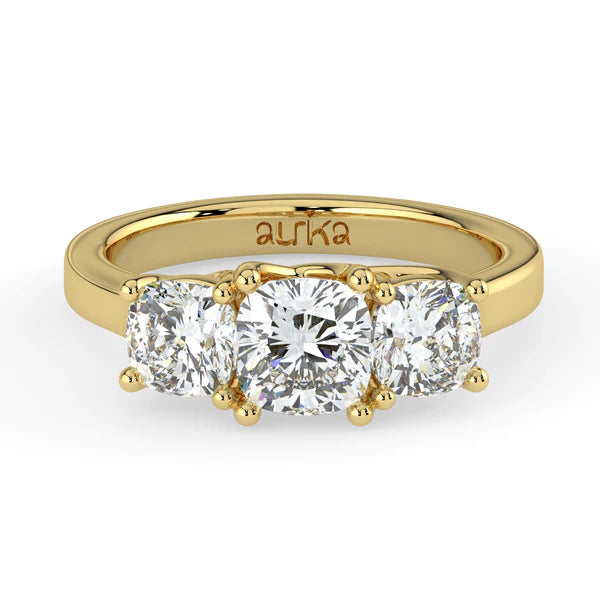
The Ultimate Guide to Solitaire Engagement Rings: Everything You Need to Know
Introduction
Solitaire engagement rings are timeless, classic, and one of the most popular choices for couples embarking on their lifelong journey together. With their simple yet elegant design, solitaire rings emphasize the beauty and brilliance of a single diamond or gemstone. Whether you're considering proposing or simply exploring options, this comprehensive guide will walk you through everything you need to know about solitaire engagement rings, from their history to choosing the perfect one for your partner.
What is a Solitaire Engagement Ring?
A solitaire engagement ring features a single gemstone—most commonly a diamond—set on a band. The simplicity of the design focuses attention on the central stone, highlighting its brilliance and cut. Unlike other engagement ring styles that may feature accent stones or elaborate designs, the solitaire setting showcases the beauty of a single gem.
Key Features of Solitaire Engagement Rings:- Single Stone: The hallmark of solitaire rings is the single center stone.
- Minimalist Design: The focus is on the gemstone, with the band and setting designed to complement, not distract.
- Versatile Style: Solitaires work with almost any band material and can fit a range of diamond shapes.
History of Solitaire Engagement Rings
Solitaire engagement rings have a rich history dating back to the Renaissance period, but they gained immense popularity in the 20th century. It was during this time that the famous "A Diamond is Forever" campaign by De Beers solidified the connection between diamonds and engagement rings, particularly the solitaire style. Since then, the solitaire has become a symbol of eternal love and commitment.
Why Choose a Solitaire Engagement Ring?
There are several reasons why solitaire engagement rings are such a popular choice:
-
Timeless Elegance: The minimalist design ensures that your ring will never go out of style. Solitaires are classic, making them a great choice for those who prefer an understated yet elegant look.
-
Focus on the Gemstone: With no distractions, the solitaire setting allows the beauty of the gemstone to take center stage. This is perfect for showcasing high-quality diamonds or other gemstones.
-
Versatile and Customizable: Whether you prefer a round brilliant diamond or a princess cut, the solitaire ring can accommodate various diamond shapes and sizes. Additionally, you can customize the band material—platinum, white gold, yellow gold, or rose gold—to match your partner’s personal style.
-
Easy to Maintain: Without intricate designs or additional stones, solitaire rings are generally easier to clean and maintain over time.
Types of Solitaire Settings
Though simple in appearance, there are several variations of solitaire settings, each offering a unique way to display the center stone.
1. Prong Setting
The most common solitaire setting, prongs are small metal claws that hold the gemstone securely in place. Prong settings usually come in 4 or 6 prongs, allowing maximum light exposure to the diamond for enhanced brilliance.
- Pros: Excellent light exposure, secure setting
- Cons: Prongs can snag on clothing or get damaged over time
2. Bezel Setting
In a bezel setting, the gemstone is encircled by a metal rim that holds it in place. This offers a sleek, modern look and provides extra protection for the diamond.
- Pros: Very secure, protects the stone from damage, modern appearance
- Cons: Less light exposure than prong settings, which can reduce sparkle
3. Tension Setting
A tension setting gives the illusion that the diamond is floating. The gemstone is held in place by the tension of the metal band, which creates a sleek and contemporary look.
- Pros: Unique and modern design, minimalist
- Cons: Requires a well-cut, durable stone, slightly less secure than prong or bezel settings
4. Cathedral Setting
A cathedral setting features arches of metal that extend from the band and support the gemstone, creating an elegant and timeless look. The setting gives the illusion of a larger diamond.
- Pros: Elegant design, enhances the size of the diamond
- Cons: May make the ring more difficult to clean
5. Flush Setting
In a flush setting, the diamond is set into the band so that the surface of the ring is smooth. This style offers the most protection for the stone, making it ideal for those with an active lifestyle.
- Pros: Very secure, great for active individuals
- Cons: Less light exposure, less sparkle
Choosing the Perfect Diamond for Your Solitaire Ring
When selecting a diamond for your solitaire engagement ring, it’s important to consider the 4 Cs: Cut, Color, Clarity, and Carat Weight.
1. Cut
The cut of a diamond has the greatest impact on its sparkle. A well-cut diamond reflects light beautifully, enhancing its brilliance. The most popular cut for solitaire engagement rings is the round brilliant cut, but princess, oval, and emerald cuts are also popular choices.
2. Color
Diamonds are graded on a color scale from D (completely colorless) to Z (light yellow or brown). For solitaire rings, diamonds in the D-F range are ideal if you want a completely colorless stone, though diamonds in the G-J range can offer excellent value without a noticeable color difference.
3. Clarity
Clarity refers to the number and size of imperfections in the diamond. These imperfections are called inclusions (internal flaws) and blemishes (surface flaws). Solitaire engagement rings typically highlight the diamond, so opting for a clarity grade of VS1 or higher will ensure the stone looks flawless to the naked eye.
4. Carat Weight
Carat weight measures the size of the diamond. While larger diamonds tend to be more expensive, the solitaire setting allows smaller diamonds to appear larger due to the focus being on the center stone. Balancing carat weight with the other three Cs can help you find the perfect diamond within your budget.
Band Options for Solitaire Engagement Rings
The band material can significantly impact the overall appearance of your solitaire engagement ring. Here are some common choices:
1. Platinum
Platinum is a durable, hypoallergenic metal with a bright, white finish that complements the sparkle of a diamond. It’s ideal for individuals with sensitive skin, but it is also one of the more expensive metals.
2. White Gold
White gold offers the same bright, modern look as platinum but at a more affordable price point. It is typically plated with rhodium to enhance its shine, but it may need to be replated over time.
3. Yellow Gold
For a more traditional look, yellow gold is a popular choice. It pairs well with diamonds in the lower color range and offers a warm, classic appearance.
4. Rose Gold
Rose gold has a unique, romantic appeal with its pinkish hue. It’s a great choice for those who want something a little different from the traditional yellow or white gold bands.
Popular Diamond Shapes for Solitaire Engagement Rings
Solitaire engagement rings can accommodate nearly any diamond shape, but some are more popular than others. Here are the top choices:
- Round Brilliant: The most popular shape for solitaire rings, round brilliant diamonds offer unmatched sparkle.
- Princess Cut: Square in shape, princess-cut diamonds provide a modern, elegant look.
- Oval: Oval diamonds elongate the finger and offer a unique twist on the traditional round shape.
- Emerald Cut: With its rectangular facets, the emerald cut creates a sophisticated, vintage look.
- Cushion Cut: Soft, rounded corners give the cushion cut a romantic and antique feel.
Customizing Your Solitaire Engagement Ring
Many couples choose to personalize their solitaire engagement rings to reflect their unique style and relationship. Here are a few ways to customize your solitaire ring:
1. Engravings
Consider adding a meaningful engraving on the inside of the band. Whether it’s a special date, initials, or a short phrase, engravings can add sentimental value to the ring.
2. Gemstone Accents
While solitaire rings traditionally feature a single stone, you can add a subtle touch of color by incorporating small gemstone accents on the band. Sapphires, emeralds, or even colored diamonds can offer a personal twist.
3. Unique Settings
Customizing the setting—such as opting for a cathedral or tension setting—can make your solitaire ring stand out.
Caring for Your Solitaire Engagement Ring
Solitaire engagement rings, while simple in design, require regular care to maintain their brilliance. Here are some tips to keep your ring looking its best:
- Regular Cleaning: Gently clean your ring with a mild soap solution and a soft toothbrush to remove dirt and oils.
- Avoid Harsh Chemicals: Chemicals found in cleaning supplies, perfumes, and lotions can damage the metal and dull the diamond.
- Professional Maintenance: Take your ring to a jeweler for periodic inspections and professional cleanings. This will ensure the prongs or other settings remain secure.
Conclusion
A solitaire engagement ring is the epitome of elegance and timeless beauty. Its simple design highlights the center gemstone, making it a perfect choice for those who appreciate classic style. Whether you choose a diamond or a colored gemstone, a prong or bezel setting, a round or princess cut, your solitaire ring will symbolize your love and commitment in the most beautiful way possible.
By understanding the key elements—from the diamond’s 4 Cs to the different band options—you’ll be well-equipped to choose the perfect solitaire engagement ring for your special moment.


